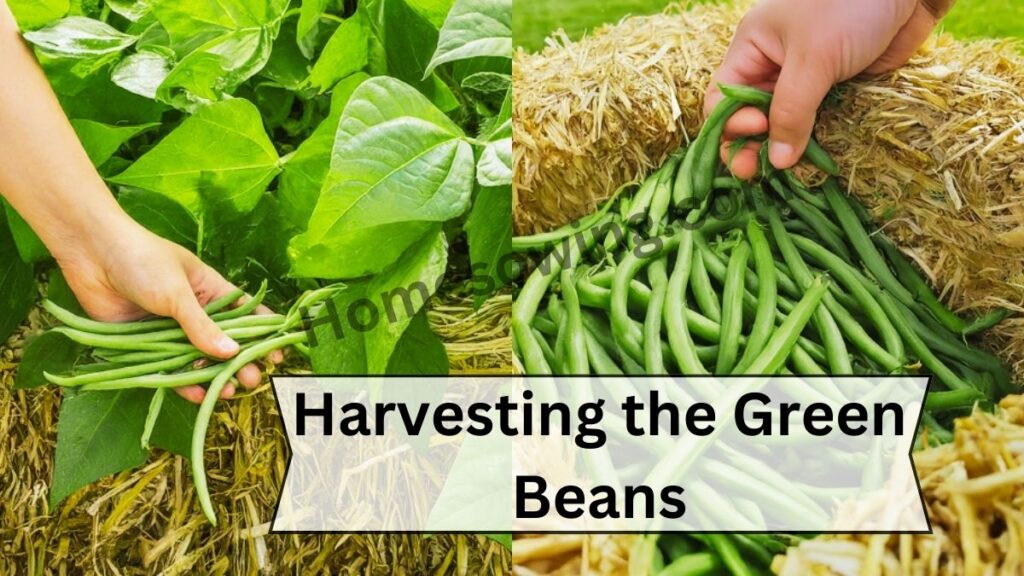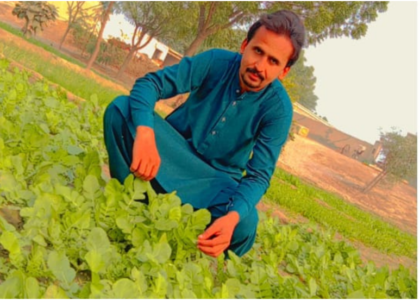Growing green beans in straw bales is an advanced and space-efficient method that can lead to a successful and productive garden. This method controls the straw bales’ natural decomposition to enrich the soil and support plant growth. Here’s a comprehensive guide to help you grow green beans in straw bales in your home garden.
Choosing and Preparing Straw Bales
Select high-quality straw bales that are free from weeds and seeds. Straw, not hay, is preferred because it’s less likely to contain seeds that could compete with your green beans. Arrange the bales in a sunny location where they will receive at least 6-8 hours of sunlight daily. Prepare the bales by soaking them thoroughly to kickstart the decomposition process. Over the next two weeks, keep the bales moist and fertilize them with a balanced, high-nitrogen fertilizer to enhance decomposition and nutrient availability. Proper preparation ensures a fertile growing medium for your green beans.

Conditioning the Straw Bales
Conditioning the straw bales is vital for generating a hospitable environment for plant roots. After the early soaking period, apply a mixture of water and a balanced fertilizer to the bales every few days to continue the decomposition process. This conditioning phase helps the straw break down and improves its nutrient content. Turn the bales occasionally to ensure even decomposition. The goal is to create a compost-like environment within the bales, which provides essential nutrients and improves moisture retention for your green beans.
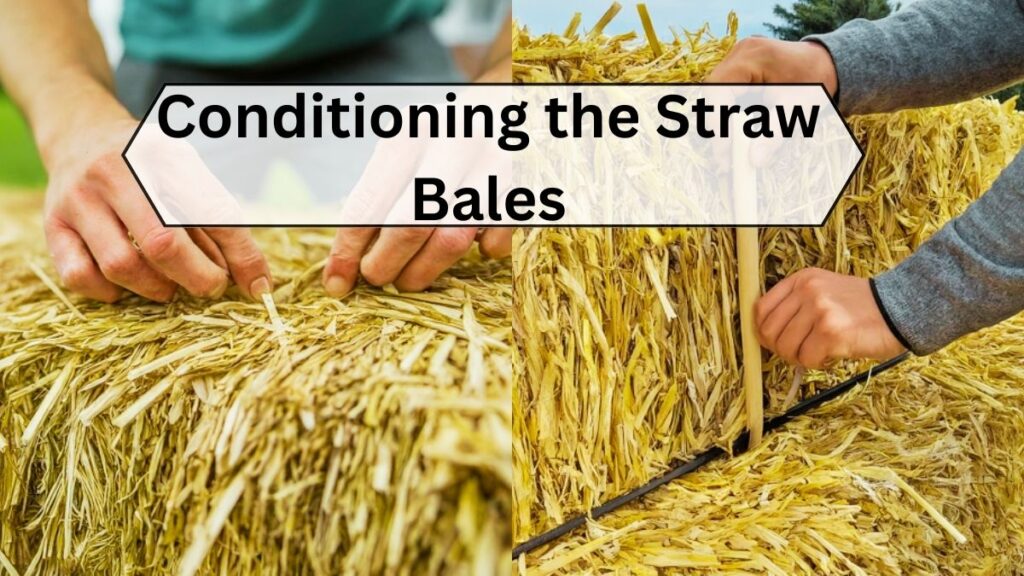
Planting the Green Beans
Once the bales have decomposed and are ready for planting, it’s time to sow your green beans. Use a garden trowel or hand to create small holes in the top of the bales, spacing them about 2-3 inches apart. Sow green bean seeds about 1 inch deep into these holes. Ensure that each bale has enough space between seeds to accommodate the plants’ growth, typically about 6-8 inches. Water the bales thoroughly after planting to settle the seeds and keep the environment moist. Proper planting techniques promote healthy seedling development and strong plant growth.
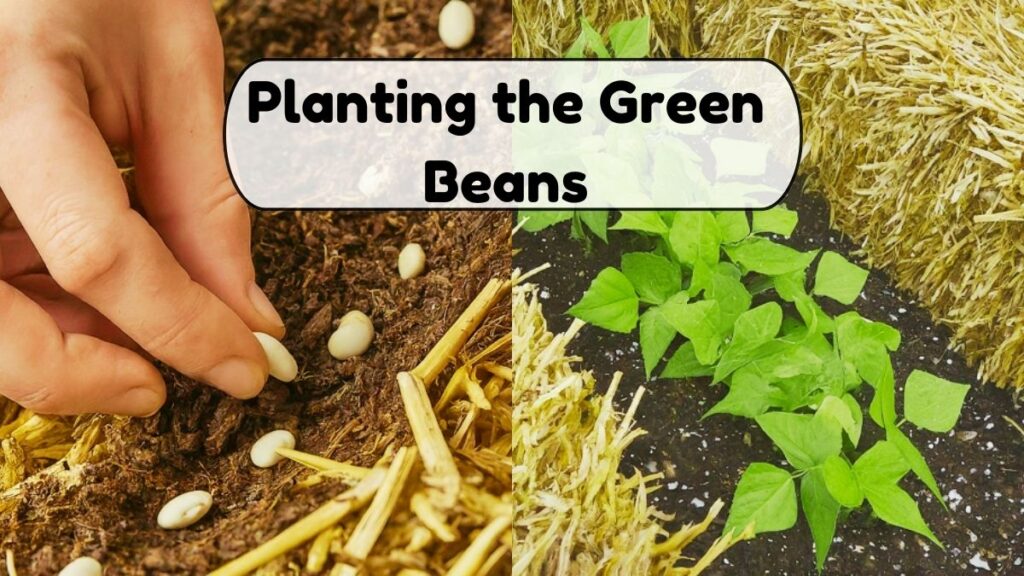
Supporting the Green Beans
Green beans, especially pole varieties, need support as they grow. Install a trellis or support system near or around the bales to allow the beans to climb. You can use stakes, bamboo poles, or a traditional trellis structure. Ensure the support is secure and tall enough to accommodate the full height of the climbing beans. As the green beans grow, gently guide the vines toward the trellis and secure them with plant ties if needed. Proper support helps the plants grow vertically, saving space and making harvesting easier.
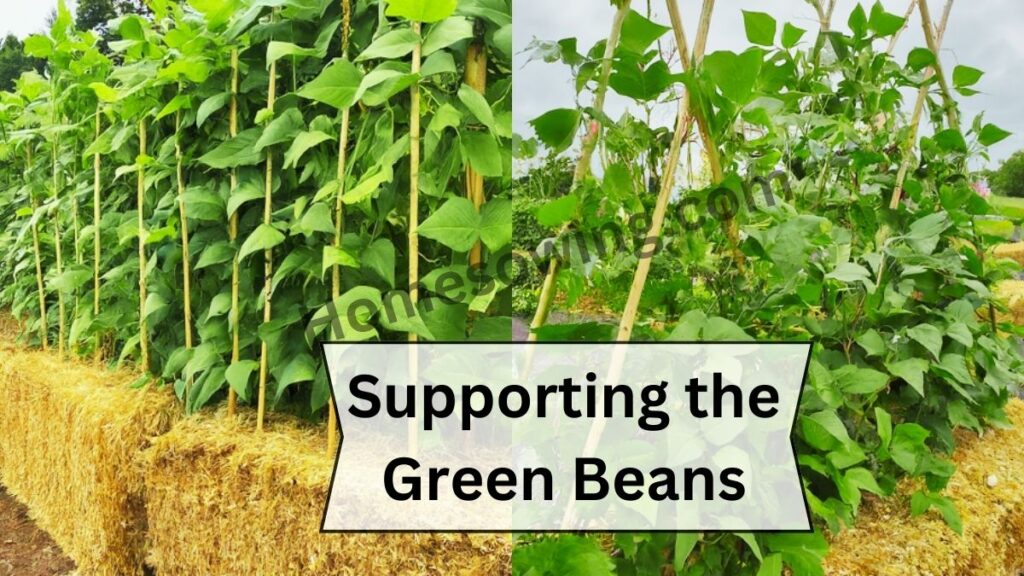
Watering and Fertilizing
Consistent watering and proper fertilization are key to successful green bean cultivation in straw bales. Keep the bales evenly moist, but avoid overwatering, which can lead to rot. Water the plants when the top inch of straw feels dry to the touch. Apply a balanced fertilizer or compost every 4-6 weeks to provide additional nutrients. The straw bales, while initially rich in nutrients, will require supplementation as the growing season progresses. Regular maintenance ensures healthy plants and a bountiful harvest.
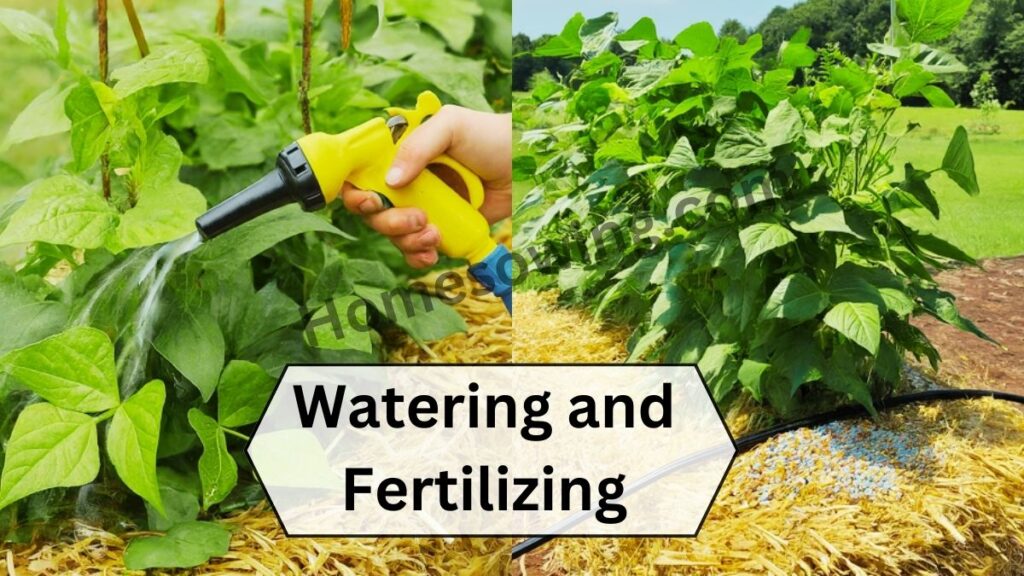
Monitoring for Pests and Diseases
Regularly inspect your green beans for signs of pests and diseases. Common issues include aphids, spider mites, and powdery mildew. Address any problems promptly using organic pest control methods, such as insecticidal soap or neem oil. Maintain good air circulation around the plants to reduce the risk of fungal infections. Early detection and management of pests and diseases help ensure a healthy and productive crop. Regular monitoring keeps your plants in optimal condition throughout the growing season.

Harvesting the Green Beans
Harvest green beans when they are young, tender, and before the seeds inside become too large and tough. Beans are usually ready to harvest 60-70 days after planting, depending on the variety. Use scissors or a small knife to cut the beans from the plant, taking care not to damage the vines. Regular harvesting encourages the plants to produce more beans throughout the season. Timely harvesting ensures that you enjoy fresh, flavorful beans and maximizes your yield from the straw bales.
